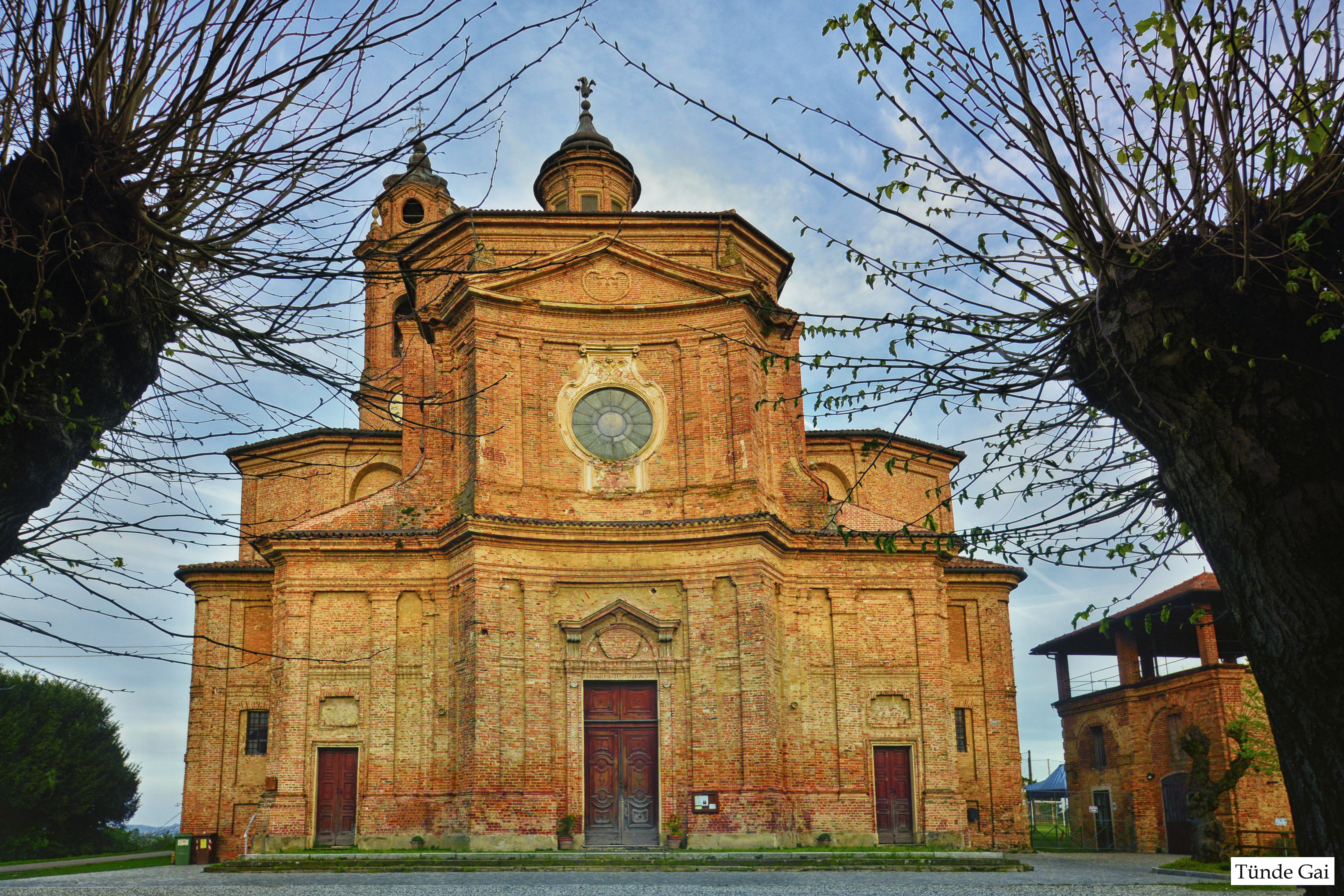
The church is one of the most wonderful examples of the Piedmont Baroque in the Asti area. It was designed in 1749 by Benedetto Alfieri, who was the architect of the Court of the Savoys and uncle of the famous playwright Vittorio from Asti. The Counts Ricci ordered the Church. They were the local feudatory and part of the Radicati family. They commissioned also a connecting hallway between the Church and their palace, situated right across from each other.
The construction was completed in 1774. The bell tower was completed a little later, in 1779 and it is a true Baroque masterpiece in terms of balanced proportions and gracefulness. The embossed bronze bells are still the original made in 1781 by the foundryman De Giorgis from Alessandria.
The central remarkable concavity is the characteristic of the stern and monumental facade. A finely carved main door and a wide rose window are embedded into it. Other features are the little gable and the sandstone door jambs, the acroterion holding the iron cross and the side flames. The pillars and pilasters with ionic capitals are like a frame of the facade.
The baroque of the buildings of Benedetto Alfieri have a Michelangelo influence, apparently joyful but stern and cold. The walls are thick with hard surfaces typical of the style of the court of Carlo Emanuele. The architect had to adapt piedmont architecture to the Savoy style, trying however to make it closer to the Romanesque. Benedetto Alfieri wanted to combine the characteristics of the Neoclassic and the Baroque style by joining picture, sculpture and stucco in a game of light and shadow to convey a sense of awe.
The interior has a form of a Greek cross, with a wide dome and an elongated presbytery. The decoration is typical of the eighteen century style with constant references to the Virgin represented in the form of shells, scattered throughout the church. Two rows of pillars with Corinthian capitals hold the precious entablature and the octagonal dome located under the cylindrical small dome.
The wide gallery is located at two thirds of the aisle. It is decorated with finely carved balustrades, painted according to the Luigi XIV style. They are from the Church of Saint Andrew in Chieri, built by the architect Juvarra and destroyed during the French Revolution. Sixteen pictures representing apostles and evangelists can be seen in the upper cornice. They date around 1824 and their author is Montaldi, a painter from Asti. Some of them are currently being restored.
In the apse behind the high altar The Madonna Assunta e Apostoli (The Virgin of the Assumption and the Apostles) is a picture of by Sebastiano Taricco from Cherasco. The Madonna del Rosario (The Virgin of the Rosary) is instead a wooden statue bought by the sculptor Danieli and it is from the Church of Saint Andrew in Chieri. It was brought to Piovà in 1791.
Benedetto Alfieri is supposed to have designed the high altar in polychrome marble and lapis-lazuli. The woodworker Negro from Piovà is probably the author of the Baroque choir stalls, as well as the church benches, with coat of arms, the pulpit and the confessional boxes. The parish Audisio from Villadeati is their designer. All of them have currently been removed together with the organ to enable the works to eliminate the water leakage.
An eighteen century crucifix on the high altar is one of the sacred ornaments, like a chalice and a monstrance given by the Cardinal Massaia. He is represented in a marble statue by Cesare Aureli (1909); the original is located in Frascati at the Capuchin friars.
The side chapels are rich in marbles. The right one is devoted to the Madonna del Rosario (Virgin of the Rosary ). It was decorated, in the years 1780-81, by the stonemason Giudice after a design by the architect Amedeo Galletti. The left wing chapel was decorated, in the years between 1771 and 1778, by the stonemasons Angelo Maria Ganna and Giuseppe Buzzi from Viggiù. The Company of the Suffrage paid for it. The altarpiece is by Bagutti.
